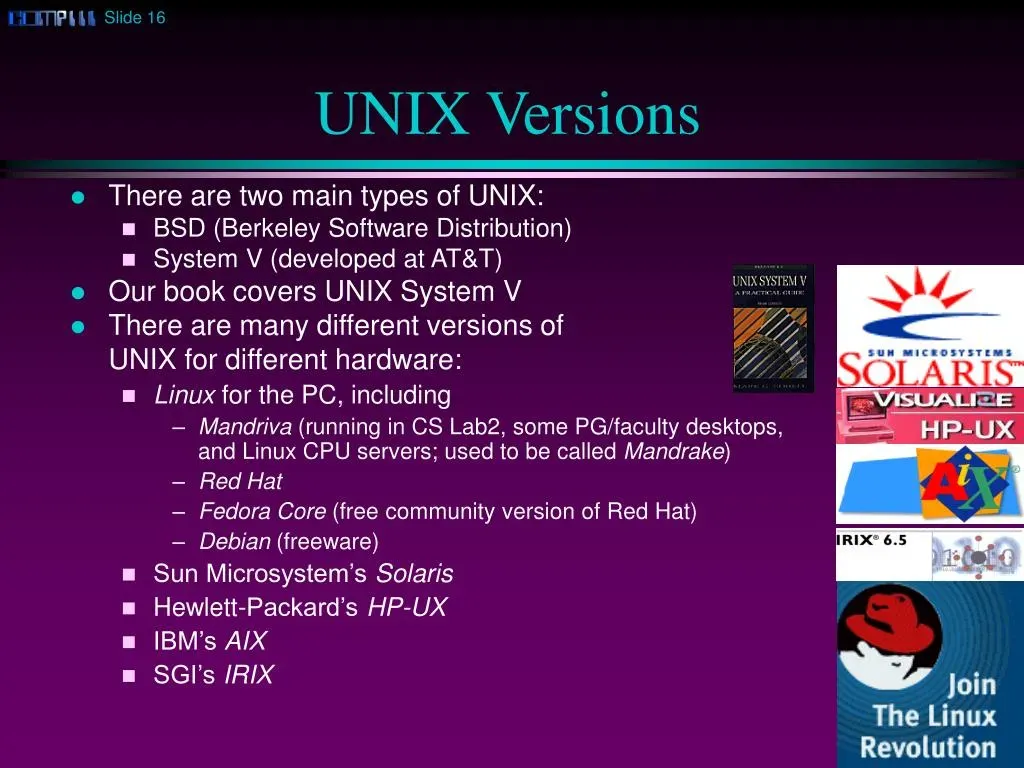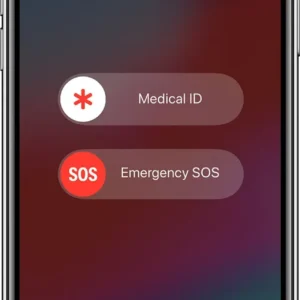Unix version 2 marks a significant milestone in the evolution of operating systems, representing a critical bridge between the first and second editions of Unix. Originally developed by Dennis Ritchie and his team, this version emerged on the PDP-11 minicomputer, showcasing innovations that would shape computing for decades. Despite its importance, much of the Unix history was shrouded in mystery, with many early versions lost to time. Recently, thanks to dedicated code archaeology, the oldest machine-readable copy of Unix version 2 has been resurrected, offering a glimpse into the past. This remarkable recovery not only highlights the efforts of Unix preservationists but also reignites interest in the foundational technologies that paved the way for modern computing.
The second iteration of the Unix operating system, often referred to as Unix V2, serves as a pivotal chapter in the broader narrative of Unix development. This operating system, designed to run on the DEC PDP-11, introduced key enhancements that laid the groundwork for future advancements. The journey of restoring Unix V2 has been fueled by passionate efforts in software archaeology, allowing enthusiasts to explore the remnants of early computing history. As we delve into the origins and legacy of Unix, we uncover the profound influence it has had on programming languages and system design. In this context, the revival of Unix V2 not only celebrates its rich heritage but also emphasizes the significance of ongoing preservation initiatives.
Restoration of Unix Version 2: A Historical Milestone
The restoration of Unix version 2, specifically its beta form, marks a significant milestone in the history of computing. This version, which was discovered from the backup tapes of Dennis Ritchie, co-creator of Unix, showcases the evolution of this pioneering operating system. The efforts of code archaeologists, like Yufeng Gao, have not only revived this nearly forgotten piece of technology but have also provided a glimpse into the past of Unix’s development. The restored code runs on a PDP-11 simulator, allowing modern users to experience a crucial step in Unix’s journey from its inception to its widespread adoption.
Unix version 2 represents more than just a historical artifact; it is a testament to the dedication of those committed to Unix preservation. This restoration sheds light on the software’s early architecture and its coding methods prior to the widespread adoption of the C programming language. The significance of this version lies in its bridging of the gap between Unix’s first and second editions, offering insights into the operational capabilities and design philosophies that shaped future developments in operating systems.
The Role of Code Archaeology in Unix Preservation
Code archaeology is an essential discipline in the field of computer science, especially when it comes to the preservation of historical software like Unix. This practice involves recovering, analyzing, and documenting old codebases that may have been forgotten or lost over time. The recent success in restoring Unix version 2 exemplifies the importance of this field, as it uncovers the intricacies of early computing practices and the evolution of programming languages. Code archaeologists like Yufeng Gao and Warren Toomey play a crucial role in this effort, ensuring that the legacy of Unix and its creators, such as Dennis Ritchie, continues to influence future generations.
Through code archaeology, we gain a deeper understanding of Unix’s historical context and its impact on modern computing. The process involves not just recovering old code but also interpreting the design decisions and programming techniques used in its creation. As seen with the discovery of Unix version 2, this work can lead to the revival of software that serves as a foundational pillar for contemporary operating systems. The meticulous efforts of those involved in Unix preservation underscore the value of keeping our technological heritage alive.
Understanding the PDP-11’s Role in Unix Development
The DEC PDP-11 played a pivotal role in the early development of Unix, serving as the second machine to run this groundbreaking operating system. Initially created for the PDP-7, Unix’s evolution onto the PDP-11 marked a significant advancement in its capabilities. The PDP-11’s 16-bit architecture allowed for more sophisticated programming techniques and greater memory management, which were crucial for the development of Unix version 2. As a result, the interplay between Unix and the PDP-11 not only advanced the operating system itself but also influenced the broader landscape of computing.
Moreover, the PDP-11’s popularity among universities and research institutions facilitated the widespread adoption of Unix, contributing to its growth and development. This synergy helped establish Unix as a standard in academic environments, leading to innovations that would shape future operating systems. Understanding the historical context of the PDP-11 within the Unix saga is essential for appreciating the technical advancements that followed, including the development of the C programming language, which further enhanced Unix’s portability and functionality.
The Legacy of Dennis Ritchie and Unix
Dennis Ritchie, often hailed as a pioneer of computer science, left an indelible mark on the world with his contributions to Unix and the C programming language. His work on Unix version 2 is particularly notable, as it laid the groundwork for many modern operating systems. Ritchie’s innovative coding practices and design philosophies have had a lasting influence, inspiring countless programmers and developers. The recent restoration of his original code from the beta version of Unix 2 highlights the importance of his legacy and the need to preserve such historical artifacts for future generations.
In addition to his technical achievements, Ritchie’s approach to software development emphasized collaboration and open communication within the programming community. This ethos has continued to resonate within the open-source movement, where sharing knowledge and resources is paramount. As we explore the restored Unix version 2, we not only celebrate Ritchie’s remarkable contributions but also recognize the collaborative spirit that has driven the evolution of Unix and its ongoing relevance in the world of technology.
The Evolution of Unix Through Its Early Versions
The evolution of Unix is marked by several key versions, each contributing to the operating system’s functionality and user experience. Starting with Unix version zero, which was developed in 1969 for the PDP-7, the system has undergone significant transformations. The transition to Unix version 1 and subsequently to version 2 showcased advancements in programming techniques, particularly with the introduction of the C programming language. Each iteration played a crucial role in refining the operating system’s capabilities, setting the stage for widespread adoption in the computing community.
Moreover, the historical context surrounding these early versions provides valuable insights into the challenges faced by developers during that era. The meticulous work of code archaeologists has become essential in reconstructing this history, allowing modern users to appreciate the complexities and innovations involved in Unix’s development. The recovery of Unix version 2 beta not only enriches our understanding of its evolution but also serves as a reminder of the collaborative efforts that have shaped the operating system we know today.
The Significance of the Unix Heritage Society
The Unix Heritage Society (TUHS) has played a vital role in documenting and preserving the history of Unix, ensuring that the legacy of this influential operating system is not forgotten. Founded by Warren Toomey, TUHS aims to collect, archive, and reconstruct the early versions of Unix, including those that preceded the development of modern computing languages. Through its efforts, the society has provided valuable resources for researchers and enthusiasts alike, facilitating a deeper understanding of Unix’s origins and evolution.
The significance of the Unix Heritage Society extends beyond mere preservation; it fosters a community of individuals passionate about the history of computing. By promoting collaborative projects and sharing findings, TUHS encourages knowledge exchange and the continued exploration of Unix’s impact on technology. The successful restoration of Unix version 2 beta serves as a testament to the society’s dedication to keeping the spirit of early computing alive, ensuring that future generations can learn from and build upon the foundational work of pioneers like Dennis Ritchie.
Rediscovering Unix Version 0: A Journey Through Time
The rediscovery of Unix version 0 has been a remarkable journey through time, showcasing the resilience of the computing community in recovering lost artifacts. Initially believed to be permanently lost, remnants of Unix version 0 were uncovered in the form of printouts and documentation, leading to a revival of interest in the early days of Unix development. This version, created for the PDP-7, represents the starting point of a revolutionary operating system that would eventually lay the foundation for modern computing.
The efforts to reconstruct Unix version 0 involved meticulous processes, including optical character recognition and assembly language coding. Volunteers dedicated their time and expertise to bring this early version back to life, highlighting the collaborative spirit that characterizes the Unix community. The availability of Unix version 0 on platforms like GitHub allows enthusiasts and researchers to delve into its code, providing invaluable insights into the origins of Unix and the coding practices of its creators.
The Challenges of Reconstructing Early Unix Versions
Reconstructing early versions of Unix presents numerous challenges, particularly due to the fragmentary nature of the available code and documentation. Many of the original files have been lost over the decades, making it difficult for code archaeologists to piece together a complete picture of Unix’s development. The work of individuals like Yufeng Gao and Warren Toomey is crucial, as they sift through remnants of the past to recover and restore what they can. Each successful reconstruction, such as that of Unix version 2 beta, underscores the complexities involved in navigating this historical landscape.
In addition to missing files, the early coding practices employed in Unix further complicate reconstruction efforts. The original versions were primarily written in assembly language, which requires a deep understanding of the hardware it was designed for. As code archaeologists work to revive these versions, they must not only interpret the code but also replicate the environments in which they were originally run, such as the PDP-11 simulator. This multifaceted approach is essential for ensuring that the restored versions function accurately and provide an authentic experience reflective of their historical context.
The Future of Unix Preservation and Exploration
As we move forward, the future of Unix preservation and exploration looks promising, thanks to the dedicated efforts of the Unix Heritage Society and other enthusiasts. The recent restoration of Unix version 2 beta serves as a reminder of the importance of preserving our technological history. Continued collaboration among code archaeologists, historians, and programmers will be essential in uncovering more lost versions and enhancing our understanding of Unix’s development. With advancements in technology, the tools and methods for code recovery and analysis are also improving, opening new avenues for exploration.
Moreover, the revival of interest in Unix’s early days has sparked a renewed appreciation for the foundational principles that shaped modern operating systems. As we delve into the histories of these early versions, we not only honor the work of pioneers like Dennis Ritchie but also inspire a new generation of developers to innovate and build upon this rich legacy. The journey of Unix preservation is ongoing, and with each new discovery, we bring the past into the present, ensuring that the lessons learned continue to influence the future of computing.
Frequently Asked Questions
What is Unix version 2 and why is it significant in Unix history?
Unix version 2, released in 1972, is significant in Unix history as it was the first version to gain widespread use on the DEC PDP-11 minicomputer. It introduced enhancements over the original Unix version 1, setting the foundation for future developments in the Unix operating system.
How was the oldest machine-readable copy of Unix version 2 restored?
The oldest machine-readable copy of Unix version 2 was restored through code archaeology efforts led by Yufeng Gao, who salvaged code from Dennis Ritchie’s original backup tapes. This restoration involved running the code on a PDP-11 simulator, reconstructing it to function as a Unix V2 beta.
What role did Dennis Ritchie play in the development of Unix version 2?
Dennis Ritchie was a co-creator of Unix and significantly influenced its development, including Unix version 2. His work laid the groundwork for Unix’s evolution, and many of the early versions were found on his backup tapes, highlighting his integral role in Unix history.
What is the relationship between Unix version 2 and the PDP-11?
Unix version 2 was specifically designed to run on the DEC PDP-11, which was a critical platform for early Unix development. The PDP-11’s architecture allowed Unix to become more widely adopted, facilitating its growth and evolution from version 1 to version 2.
Why is Unix preservation important for understanding early computing?
Unix preservation is crucial for understanding early computing because it allows researchers and enthusiasts to study the origins and evolution of operating systems. Efforts to recover versions like Unix version 2 provide insights into programming practices, system architecture, and the historical significance of Unix in modern computing.
What challenges did code archaeologists face in restoring Unix version 2?
Code archaeologists faced significant challenges in restoring Unix version 2, including dealing with fragmentary and undocumented backup tapes from Dennis Ritchie. The complexities of reconstructing functioning code from these early, assembly-language versions posed a formidable task.
How does Unix version 2 relate to the creation of the C programming language?
Unix version 2 predates the widespread adoption of the C programming language, which was developed later by Dennis Ritchie. The early versions of Unix, including V2, were originally coded in assembly language, showcasing the evolution of programming languages alongside Unix development.
What is the significance of the Unix Heritage Society in the context of Unix preservation?
The Unix Heritage Society, founded by Warren Toomey, plays a vital role in Unix preservation by documenting and reconstructing Unix’s history. This organization helps recover lost versions of Unix, including efforts to bring back Unix version 2 and its predecessors, ensuring that this important software heritage is not forgotten.
Where can I find the restored code of Unix version 2?
The restored code of Unix version 2 is available on GitHub, where enthusiasts and researchers can access the software and disk images. This provides an opportunity to explore the early architecture of Unix and its evolution over the decades.
What is the relationship between the Unix version 2 restoration project and modern computing?
The restoration of Unix version 2 has implications for modern computing as it highlights the historical development of operating systems and programming practices. Understanding these early systems helps inform current technologies and methodologies in software development and operating system design.
| Key Point | Details |
|---|---|
| Restoration of Unix version 2 | The oldest machine-readable copy of Unix version 2 has been restored and runs on a PDP-11 simulator. |
| Historical Significance | This restoration marks a significant achievement in recovering one of the oldest pieces of software, dating back over fifty years. |
| Code Archaeology | Yufeng Gao identified the restored code as a ‘V2 beta’, sitting between Unix First Edition and Second Edition. |
| PDP-11 Simulator | The restored Unix version 2 operates on the DEC PDP-11 simulator, showcasing its compatibility with V2 binaries. |
| Preservation Efforts | The Unix Heritage Society and various volunteers have played crucial roles in documenting and reconstructing Unix’s history. |
| Previous Versions | Earlier versions like Unix version 0 were also reconstructed, showing the ongoing efforts to preserve Unix’s legacy. |
Summary
Unix version 2 has been successfully revived, demonstrating the resilience and significance of early computing history. This remarkable achievement highlights the dedication of code archaeologists and historians in resurrecting software that has shaped the modern computing landscape. As we delve into the details of Unix version 2’s restoration, we appreciate the collaborative efforts that have made this possible, ensuring that this crucial piece of technology continues to inspire future generations.










